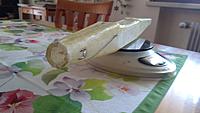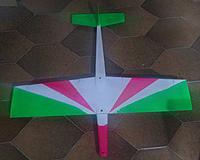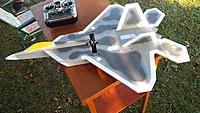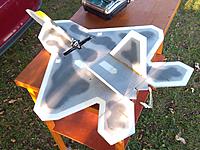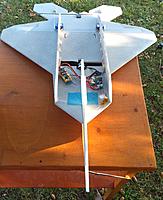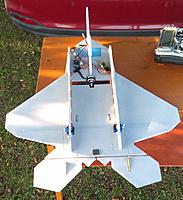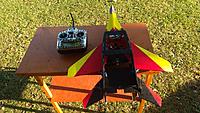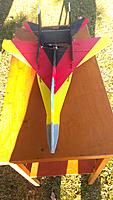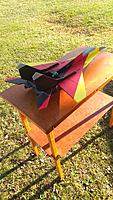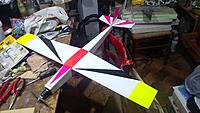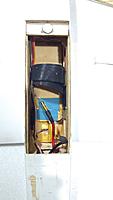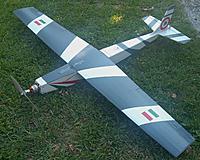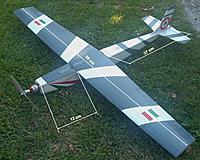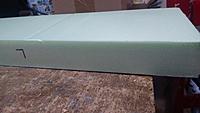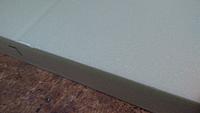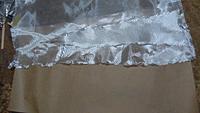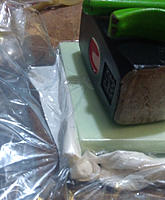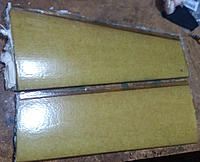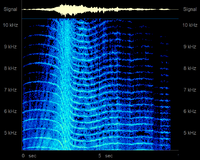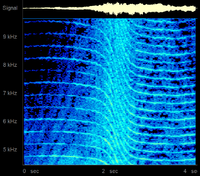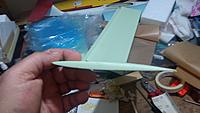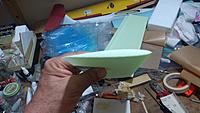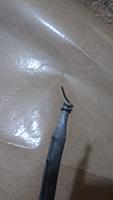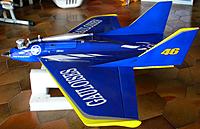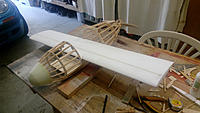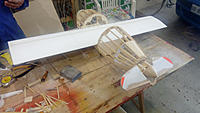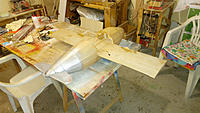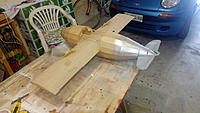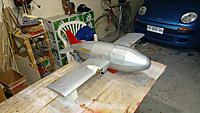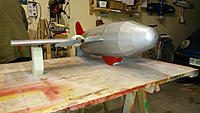This story starts long ago: on the italian magazzine "Modellistica" of December 1993 I saw an article about an electric model designed by Joe Beshar, which I believe also cooperated later on with Lanier for the realization of their Shrike model.
I did like the geometry of the model and, with a friend of mine, decided to make one for a .40 glow motor, but changing some things :
- wing arifoil : I opted for a GOE 445 laminar and faster
- wing span : I went for 130 cm (52") to achieve surface enought extended to manage the extra weight
- fusolage : new in fiberglass to include some kind of karman.
The motor chosen has been a kwick 500 from supertigre which allowed the model to reach 130+ Mph.
Not only, but the model resulted also very maneuvrable and, despite its nearly 2.2 Kg (5 lb), with an excellent gliding capacity and on the top NO STALL (.... ok no significand stall: it just lowers the left wing of 1-2" and slides on that side regaining a little speed).
2 years later Lanier launched its Shrike.
Later on I made also a smaller version of about 80-90 cm (32-36") for a MDS .15 with resonance and the result has not been far from the bigger brother.
Today my son has one with the wing tips cut 5 cm (2") per side and with a MVVS 40 GRRT ( the very old pilon motor), which flyes at about 160 Mph.
I am thinking about making a small one for an electric motor; we'll see.
At the end many thanks to Joe Beshar for its wonderful idea.
If you want the original lanier plans you can find them here:
https://outerzone.co.uk/plan_details.asp?ID=8900
https://outerzone.co.uk/plan_details.asp?ID=8886


